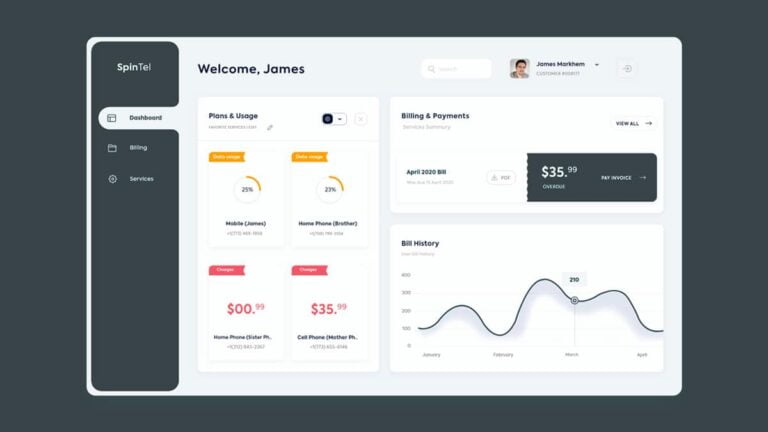In fintech software development services, FinTechs still contend with significant headwinds in operations, fundraising, and regulatory challenges across the world. Before the pandemic happened, fintech startups already had difficulties in funding. This can be attributed to lower interest rates and the worldwide economic slowdown FinTech need to cope with. But despite these obstacles, fintech companies are expected to benefit from new opportunities created by the COVID-19 crisis.
With social distancing norms in place and digital wallets trending globally, fintech companies should be well positioned to effectively seize these tremendous opportunities that can revolutionize their businesses. However, this is only possible if you follow the trends that have been repeatedly discussed at Jatapp.co. Knowledge of current trends in the financial market is a prerequisite for success.
Latest Trends in FinTech
Building apps for the finance sector means following the latest technological trends in the market; otherwise, you will not be able to gain a competitive advantage and win a large niche share. Even when ordering the creation of FinTech products from trusted companies, you still need to make sure that all the most important trends and the latest technological solutions are taken into account and implemented properly. And for this, you need to know them and deeply understand how the following selection of the most important trends that will continue to develop in the coming years will help.
1. Buy Now Pay Later (BNPL)
Fintech software development solutions aim to meet the needs of modern businesses and their customers, with BNPL services being one of the fastest-growing trends in fintech. This technology allows customers to purchase goods or services online or in-store, with convenient payment plans that can help them better manage their finances. The report predicts rapid growth for this sector, forecasting a market value increase from $24 billion to $67 billion by 2025. Fintech companies are uniquely positioned to offer competitive interest rates and payment terms as well as innovative features such as loyalty programs – all of which contribute to its growing popularity.
2. Blockchain
Blockchain technology has revolutionized the idea of financial transactions and continues to revolutionize it further. Its fast global reach and low processing fees have enabled it to make its mark as a force to be reckoned with; a recent report estimated that blockchain has the potential to boost the global economy to $1.76 trillion over the next decade, with China and the United States taking the lead in regards to benefiting from technology.
Among those sectors that have already gained massive market value, banking takes a comfortable lead with a 29.7% share, followed by process manufacturing (11.4%), discrete manufacturing (10.9%), and professional services (6.6%). Furthermore, the growth of blockchain wallets is also showing no signs of slowing down – now standing at 40 million users worldwide, investors have been increasingly investing in order to increase blockchain’s reach even further.
3. Alternative Finance
Today, fintech solution developments are revolutionizing the alternative financing sector and have an optimistic future. With an expected growth of 20 percent by 2023 and a CAGR of 6.3% by 2028, the value of this sector is currently valued at $6.62 billion (source). Aside from simplified business loans offered by traditional banks, new fintech companies are innovating their products to offer insurance, equity finance, and much more. All these points towards a huge potential for the Alt Finance industry, proving that fintech solutions development has taken it one step forward.
4. Contactless Technology
Contactless technology is revolutionizing the way people make payments. Gone are the days of waiting in line to pay with cash or a credit/debit card; today, consumers can simply wave their phone over a merchant’s contactless reader to quickly and securely transact. The trend toward contactless payments is only set to grow in the coming years. According to PwC, global mobile payment transactions are estimated to reach $1.08 trillion by 2022-23, thanks in large part to the increased adoption of NFC (near-field communication) technology among smartphones and other devices. What’s more, contactless technologies boast numerous benefits for both consumers and merchants: they’re faster and more secure than traditional payment methods and come with lower processing fees than card transactions — making them an enticing choice all around.
5. AI
Banks are aware of their vast potential for wealth, given the revenues they generate exceed that of entire nations. This understanding has meant that the banking sector has been quick to embrace AI technology and continue to fine-tune its AI strategies in order to drive wider adoption of AI. Projections have it that banks will be able to reduce their operating costs by 22% due to AI technologies by 2030. However, there is concern about the shortage of professionals skilled in everything related to AI, with hiring fintech developers being only a fraction of what is needed. But, also thanks to its unstructured data handling capabilities, AI may be well placed to identify and respond constructively to financial frauds.
6. Neobanks
There are more than 70 neobanks globally, and this number is likely to increase in the years to come. With Sweden being the first country to discontinue cash, more countries are likely to follow suit and opt for this digital-only approach. According to an eMarketer report, by 2024, the number of neobank users will double compared with 2020, and 62% of Americans are four times more likely to use a neobank than a traditional bank.
7. RegTech
The financial sector is one of the biggest going concerns in the world, and its regulation has become increasingly complex. This year, RegTech is on course to disrupt the regulatory landscape by providing advanced tech solutions for compliance issues. With the introduction of alternative finance, blockchain, and AI, the FinTech sector will draw attention from governments across the globe. RegTech can provide cloud technology, machine learning, and data analytics-driven solutions that will enable financial institutions to identify and prevent risks effectively in the coming years. According to Juniper Research, there’s an expectation that this industry will experience 200% growth between now and 2026 – definitely a trend that should be monitored.
Conclusion
In conclusion, the financial sector is undergoing an immense transformation thanks to fintech solution developments. It has allowed the industry to expand its reach and create innovative products that cater to a variety of customer needs while also providing more convenience and security in transactions. AI, blockchain technology, alternative finance options, neobanks, and contactless payments – all this only proves that the financial sector is growing and this trend will continue in the future.








